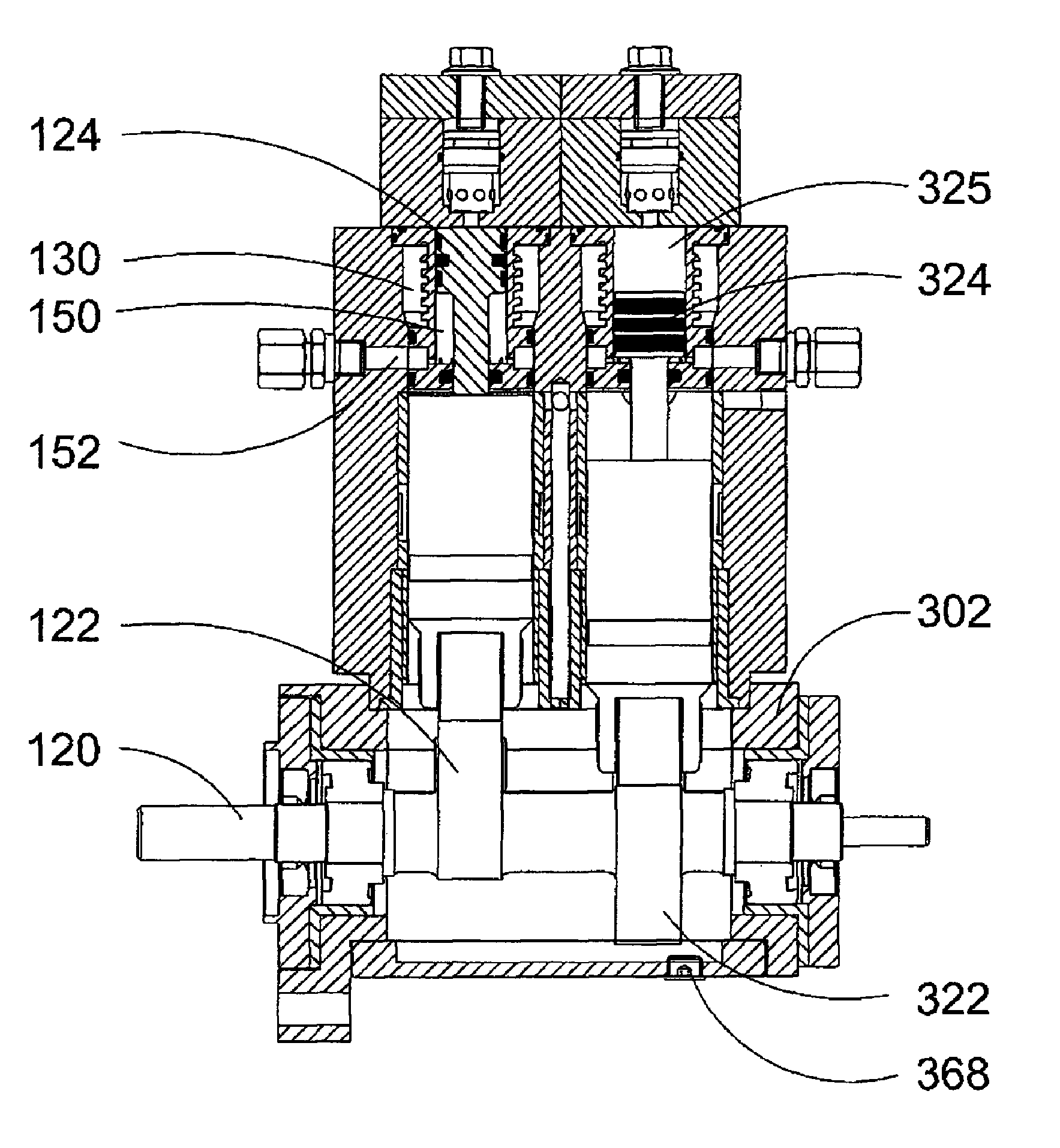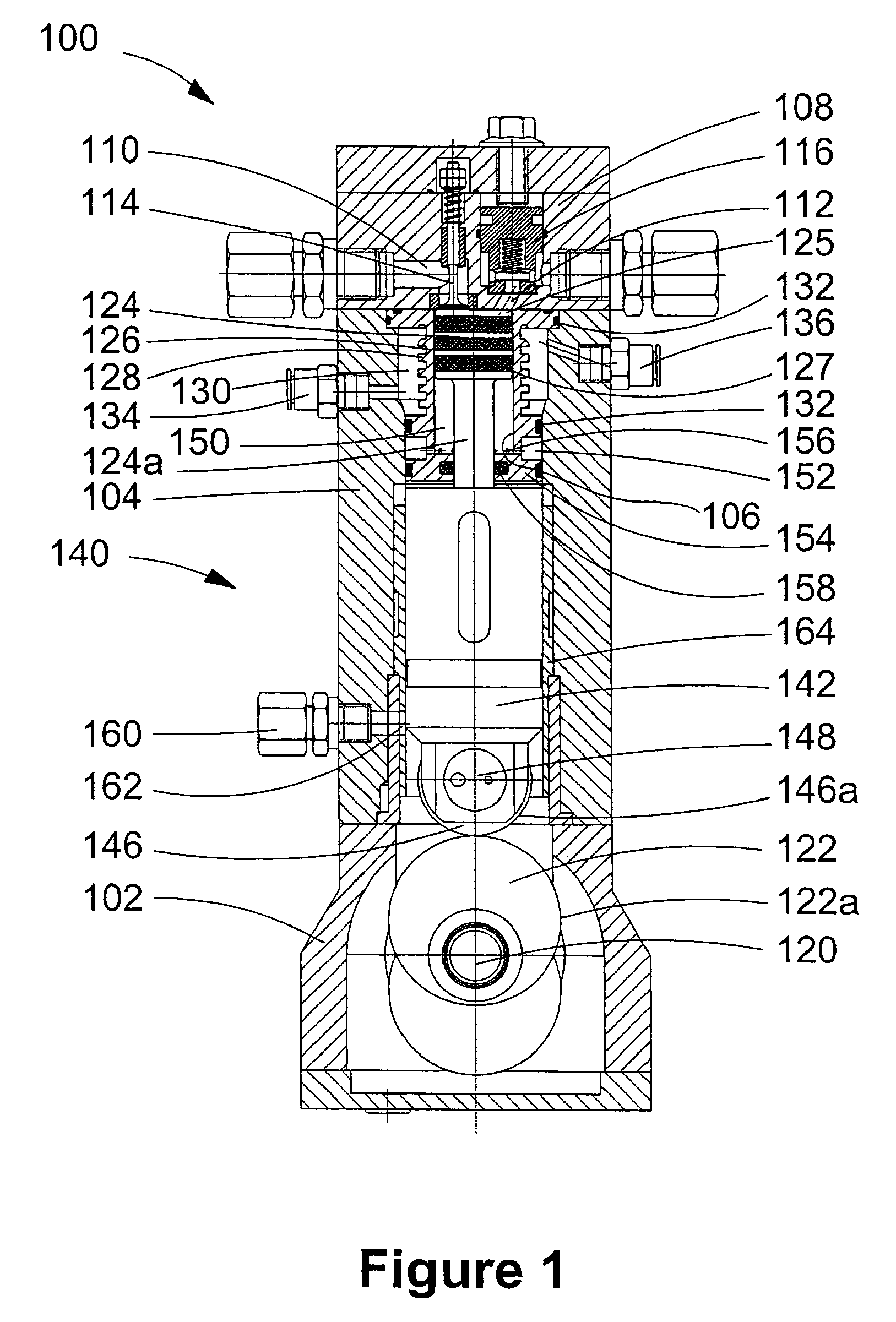High-pressure gas compressor and method of operating a high-pressure gas compressor
a gas compressor and high-pressure technology, applied in the direction of mechanical equipment, pumps, liquid fuel engines, etc., can solve the problems of increasing the weight and overall size of the compressor, the practicability of maintaining the hertzian pressure below the desired limit, and the weight of the roller is too large to achieve the effect of increasing the hardness of the surface, reducing the coefficient of friction, and good sealing
- Summary
- Abstract
- Description
- Claims
- Application Information
AI Technical Summary
Benefits of technology
Problems solved by technology
Method used
Image
Examples
Embodiment Construction
)
[0033]FIG. 1 is a section end-view of gas compressor 100. Compressor 100 can be adapted to compress various types of gases. In a particular application, the gases can be fuel gases, which are combustible and consumable as fuel in an internal combustion engine, such as gases selected from the group consisting of natural gas, a constituent of natural gas individually, propane, bio-gas, landfill gas, hydrogen gas, and mixtures of such gaseous fuels. In preferred embodiments for this application, the mechanical energy for driving compressor 100 can be supplied from the internal combustion engine that consumes the high-pressure gas discharged from compressor 100. For engines that inject the fuel gas directly into the combustion chamber when the engine's piston is near or at top dead center, it is necessary to supply the fuel gas at a high pressure in order to overcome the in-cylinder pressure and to achieve the desired fuel penetration and mixing. Gas compressor 100 is operable to disch...
PUM
 Login to View More
Login to View More Abstract
Description
Claims
Application Information
 Login to View More
Login to View More - R&D
- Intellectual Property
- Life Sciences
- Materials
- Tech Scout
- Unparalleled Data Quality
- Higher Quality Content
- 60% Fewer Hallucinations
Browse by: Latest US Patents, China's latest patents, Technical Efficacy Thesaurus, Application Domain, Technology Topic, Popular Technical Reports.
© 2025 PatSnap. All rights reserved.Legal|Privacy policy|Modern Slavery Act Transparency Statement|Sitemap|About US| Contact US: help@patsnap.com



